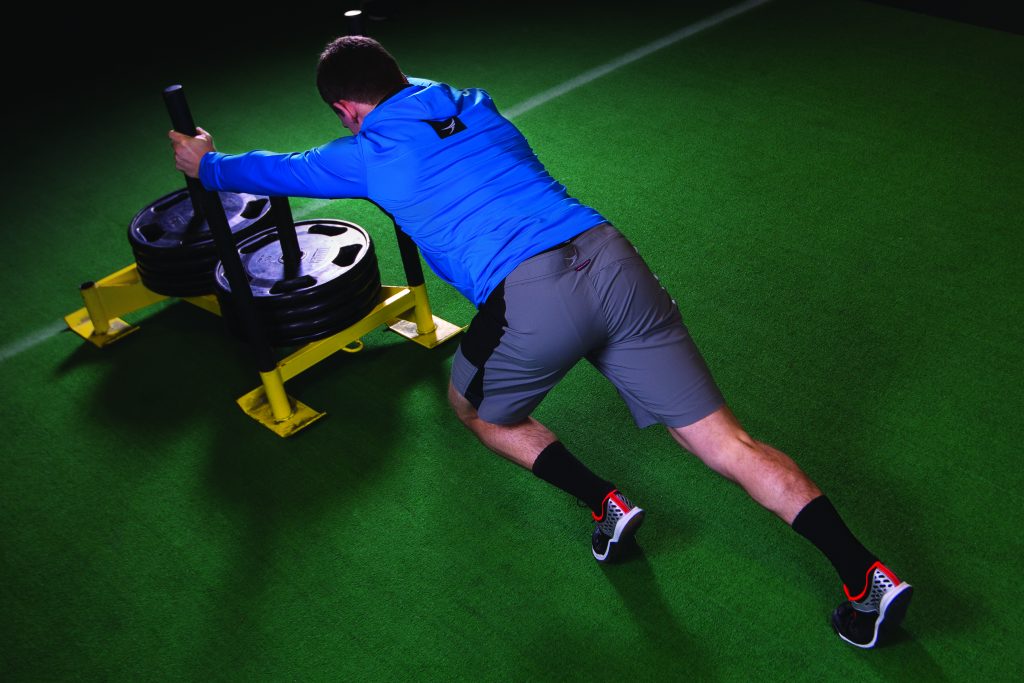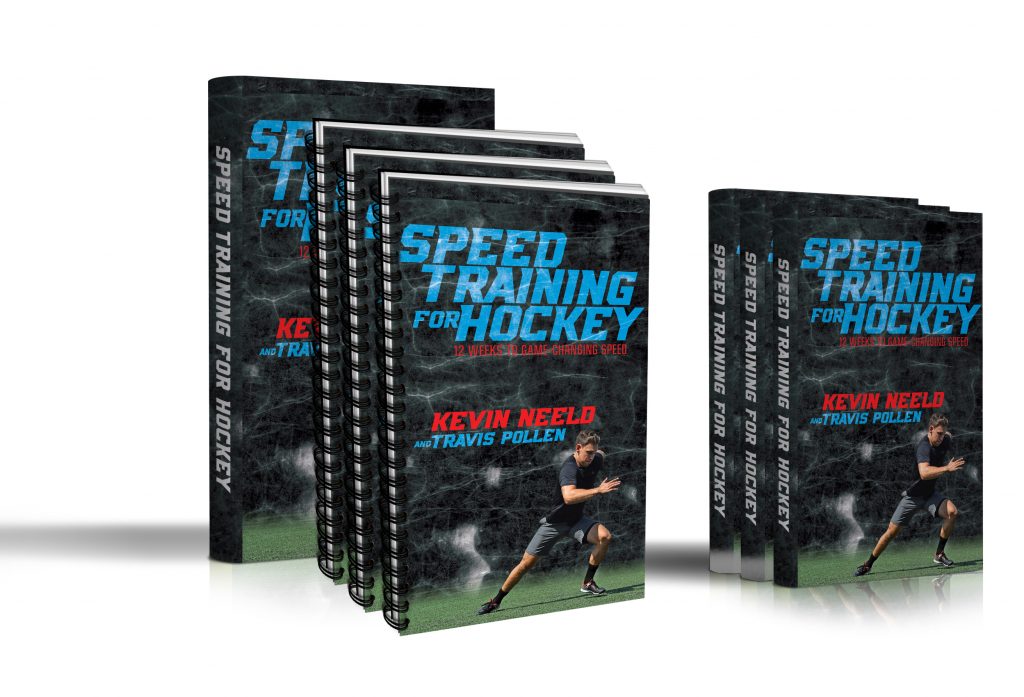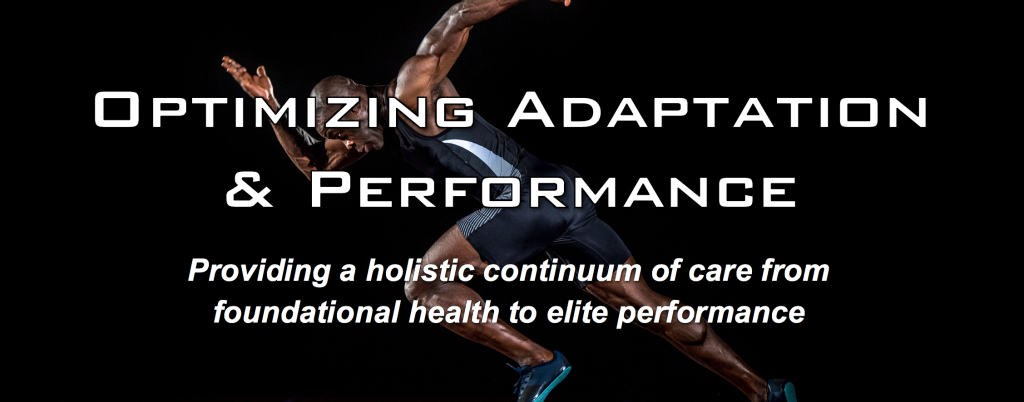Conditioning for hockey is arguably one of the most misunderstood elements of preparing for the sport. If done well, conditioning can help support speed development and repeating high-speed efforts over the course of a game and throughout the season. If done poorly, conditioning can interfere with speed development, and compromise the consistency of a player’s energy.
Traditionally, many players just “played themselves into shape” over the course of the first few weeks of the season. Conditioning was more of an afterthought, not a structured, specifically sequenced training plan.
Our beliefs about hockey conditioning have come a long way in recent years. Thanks to technology like heart rate monitoring, video tracking, and accelerometry, sports scientists now have a much better understanding of the unique demands of the sport.
Unfortunately, this understanding has been slow to trickle down to the masses, and even slower to make meaningful change in how most players prepare for the season.
Below are four hockey conditioning myths that will interfere with optimal speed development.
1. A typical shift is 40-60s, so players should condition using intervals of this length to make shifts feel easier on game day
If you’re only looking at a stopwatch, intervals in the 45-60s range seem like the most specific way to prepare for hockey.
However, as world-renowned sprint coach Charlie Francis once said, “watch the player, not the game.” The reality is that, while the shift may last 45s, most players perform 2-5 high intensity skating and/or battling efforts lasting ~3-7s for a total work output of 15-25s per shift.
Of course, taking this information to mean that players should just perform intervals 20s in length would be almost as misguided as the rationale for going 45s.
The most effective use of this information lies in understanding the layers of what contributes to maximal performance in this environment. More specifically, the abilities to:
- maximize acceleration/speed
- produce high work outputs for durations less than ~8s
- repeat several maximal work outputs of short duration with incomplete rest
- effectively manage acidic environments and shuttle lactate to be used as a fuel by other muscles
These qualities all have specific training strategies, and working in the ~20-60s range really only addresses the last ability.
2. High-intensity interval training (HIIT) alone is sufficient for hockey conditioning
This is really related to the first point, but different in that high-intensity interval training is a phrase that has been driven largely by the fitness industry, whereas the 45-60s idea came from the hockey world.
It is common to see off-season training programs that prescribe high-intensity intervals (e.g. 8-10 rounds of 30 seconds on, 60 seconds off) using shuttle runs, slideboards, bikes, circuit training, etc.
While the inclusion of HIIT is a positive trend, it has come at the expense of other important conditioning strategies.
As mentioned above, these types of intervals are fueled heavily by glycolytic and aerobic energy systems, and repeat performance in these activities is heavily dependent upon pH management (the ability to buffer the acidic environment), the efficacy of the aerobic system of both providing energy and shuttling lactate to be used as a fuel by other muscles.
In contrast, shorter intervals with relatively longer rest periods (i.e. longer rest as a percentage of the work duration) emphasize higher movement speeds (neural and mechanical outputs), while also training the body to increase the rate of fuel delivery/processing.
Simply, this type of training helps players produce higher work rates during their high-intensity efforts each shift.
Exclusively using longer intervals misses an opportunity to train qualities essential to on-ice speed. To be clear, longer intervals definitely have a place in the off-season programs of most players, but only for a phase or two. And these phases should be placed at specific points within an off-season program to maximize on-ice transfer and minimize any interference with speed development.
3. Short rest between sprints is still speed training
This is one of the most common practical mistakes I’ve seen in a lot of youth hockey programs over the years. Coaches want to do “speed work” so they line the kids up, have them do sprints, walk back, and then go again.
On the surface, this seems like it’s abiding by the rules I laid out above (i.e. not just using longer duration intervals for conditioning). However, it’s important to really understand the GOAL of the training. Let me provide a few quick examples:
- 25-Yard Sprint (60-90s rest): Conservatively, this sprint would take less than ~5s (depending on the age of the player), so resting for 60s is a 1:12 work to rest ratio. While elite sprinters require longer rest intervals, performing sprints in this manner in small clusters (e.g. 2-3 sprints then resting longer before performing another cluster) is effective at improving speed in hockey players.
- 50-Yard Shuttle (75-90s rest): Slightly lengthening the work (~8-10s) while maintaining the same rest period will shift the emphasis toward extending high work outputs for prolonged periods of time. The rest period will not allow the player to recover fully, but will allow the player to perform ~6-8 sprints without a significant drop-off in time.
- 50-Yard Shuttle (30s rest): Shortening the rest will lead to a significant drop-off in speed/time across repeated sprints. This decrease in speed is the result of an inability of the body’s fast energy delivery systems to recover from the previous efforts. In short, as speed decreases, more of the energy is supplied by the aerobic system. This isn’t inherently bad (as we’ll see shortly), but it’s clearly not speed training.
These are just a few simple examples to demonstrate the effect that the work and rest durations can have on the outcome of the training.
If the goal of sprinting is to improve speed, a good rule of thumb is to wait until the players are no longer breathing heavy – and then wait another 15-30s – before beginning the next sprint.
4. Aerobic training is unnecessary (and boring)
With such an emphasis on maintaining high speed outputs throughout training, you may be thinking that aerobic training is obsolete.
Here’s the thing – having a well-developed aerobic system will help players recover faster from high intensity efforts (e.g. recover faster from a sprint), recover better between games, and generally adapt to training better.
These are all obviously desirable benefits. There are two important things to consider when integrating aerobic training into off-season hockey training programs – the method, and the timing.
Aerobic training gets a bad reputation in part because when most people hear aerobic training they think of long, slow continuous running or biking. While these are certainly methods that can serve a purpose, there are several others less monotonous ways to develop the aerobic system.
For example, repeating intervals of a 10s heavy sled push with 60s of rest with heart rate below the anaerobic threshold can be a way to improve the oxidative abilities of fast twitch muscle fibers.

As another example, running clusters of 30s of work with 30s of rest at a speed around a mile run pace allows players to accumulate a significant amount of work above VO2 Max, which is a strong stimulus for improving aerobic power.
Neither of these methods resemble traditional aerobic training, but the training targets are aerobic in nature.
The second major consideration is the timing. There is more flexibility to adjust timing as training frequency increases, but in general – it’s best to avoid high volume aerobic work on the same day as high speed/power/force work.
Because the body adapts to high loads on the nervous and muscular systems differently than it does to aerobic training, attempting to improve both in the same day leads to conflicting messages about how the body should adapt.
Ultimately, this compromises improvements in both areas. This is particularly true with athletes that have been training for more than a couple years.
Including aerobic work on the days between “lifting days” can be a great method to help players improve their aerobic abilities, recover from the previous day, and accumulate more training volume. In this way, the player can enjoy the benefits of aerobic training without sending conflicting messages to the body about how to adapt.
When more optimal methods are chosen and programmed at the right time, aerobic training can be an effective means of improving a hockey player’s ability to consistently perform high speed efforts, shift after shift, game after game, season after season.
Wrap Up
These four hockey conditioning “myths” are all well-intentioned and seemingly logical. Understanding why and when to program specific strategies can make a huge difference in whether the strategies are effective at supporting consistent high-speed performance, or whether the conditioning interferes with a player’s speed training efforts.
Tomorrow morning I’m going to send a special announcement exclusively for newsletter subscribers. If you haven’t already, get on the list by entering your name and email in the form below!
To your success,
Kevin Neeld
HockeyTransformation.com
OptimizingMovement.com
UltimateHockeyTraining.com
Enter your first name and email below to sign up for my FREE Athletic Development and Hockey Training Newsletter!







 Use CODE: "Neeld15" to save 15%
Use CODE: "Neeld15" to save 15%